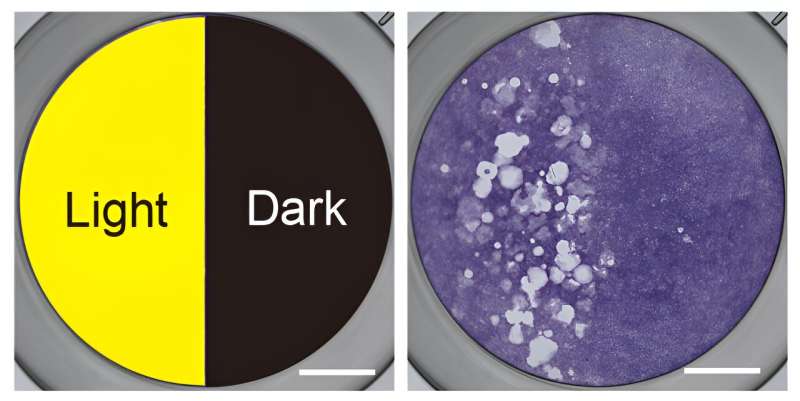This article has been reviewed according to Science X's editorial process and policies. Editors have highlighted the following attributes while ensuring the content's credibility:
fact-checked
peer-reviewed publication
trusted source
proofread
Opto-RANK: A light switch for osteoclasts that could activate bone repair

Drinking milk helps your bones grow big and strong, but what if direct exposure to light could help, too? Now, researchers from Japan report that lighting up bone tissue could help treat bone disease.
In a study published last month in Scientific Reports, researchers from Tokyo Medical and Dental University (TMDU) have revealed that a treatment approach based on light could help activate bones to repair themselves.
Bones are constantly being remodeled through the action of osteoclasts, which break down bone tissue, and osteoblasts, which create new bone tissue. Both cell types develop from immature precursor cells, and controlling their activity is a promising approach for treating bone growth disorders.
"Previous studies have used optogenetics, in which target molecules are activated by light, to induce or enhance specific cellular functions," says the co-senior author of the study, Takao Nakata. "However, optogenetics tools have not yet been used to generate mature differentiated cells from their precursors, such as osteoclasts from monocytes/macrophages."
In this study, the researchers constructed a light-activated form of RANK, an important signaling protein in osteoclast differentiation. They then expressed this optogenetic protein, called Opto-RANK, in macrophages and activated it with light to see if the cells would start to behave like osteoclasts.
"The results were very clear," explains Tomohiro Ishii, co-senior author. "Opto-RANK responded to blue light activation by forming active clusters that recruited TRAF6, a crucial molecule that regulates osteoclast differentiation."
In addition, the light-activated cells exhibited activation of three genes that are normally expressed in maturing osteoclasts. The cells also formed many small pits, which is a feature of mature osteoclasts that helps them break down bone tissue.
"Our findings suggest that Opto-RANK can be used to induce macrophage differentiation into osteoclasts and stimulate local bone resorption when activated by blue light," says Nakata.
The precise control of Opto-RANK activity that can be achieved with light activation could make it a powerful tool for cell therapy, such as the treatment of abnormal calcification diseases and orthodontic issues. In addition, Opto-RANK could be useful beyond bone biology, as RANK signaling is involved in other important functions, such as immunity, body temperature regulation, and tumor development.
More information: Aiko Takada et al, Development of an optogenetics tool, Opto-RANK, for control of osteoclast differentiation using blue light, Scientific Reports (2024). DOI: 10.1038/s41598-024-52056-w



















